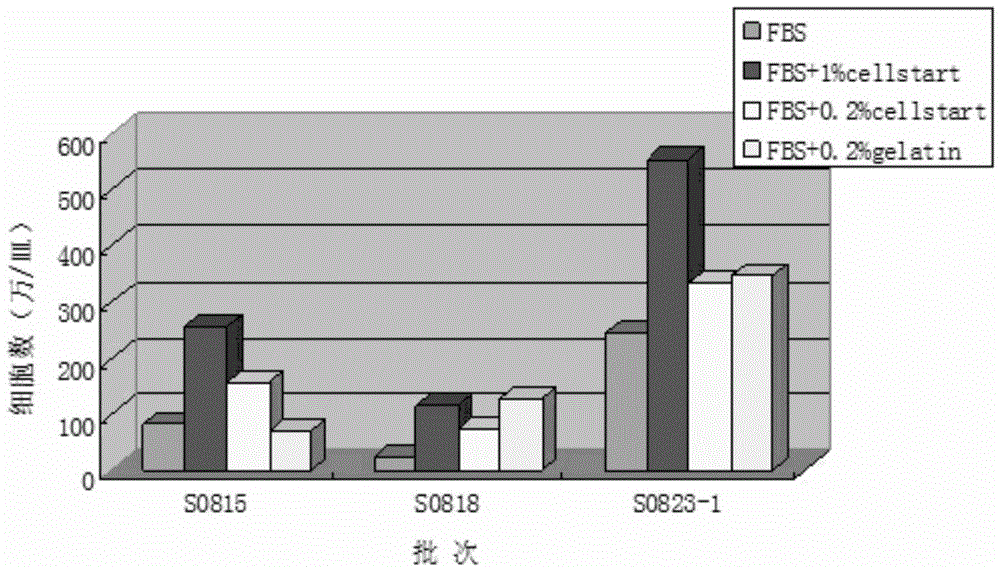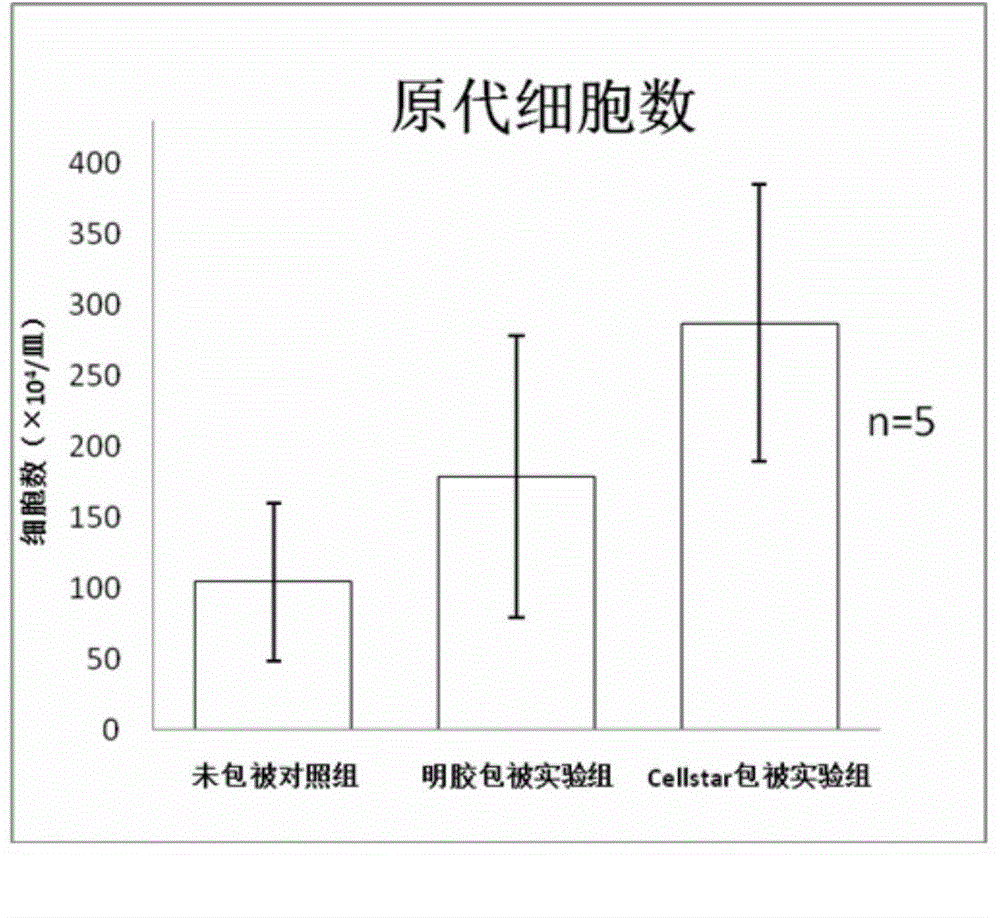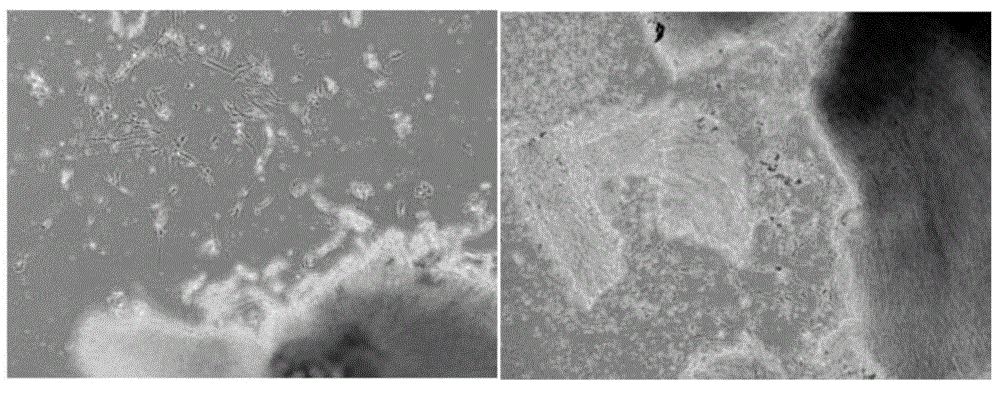Umbilical cord mesenchymal stem cell separation method
A separation method and stem cell technology, which can be applied to animal cells, vertebrate cells, bone/connective tissue cells, etc., can solve the problems of mixed endothelial cells, low purity and high cost, improve separation efficiency, and have good application prospects. The effect of increasing the number
- Summary
- Abstract
- Description
- Claims
- Application Information
AI Technical Summary
Problems solved by technology
Method used
Image
Examples
Embodiment 1
[0031] Embodiment 1 separation and purification method of the present invention
[0032] Petri dish pretreatment: 10cm cell culture dish was coated with 1ml 0.2% gelatin overnight to remove residual gelatin;
[0033] Isolation of umbilical cord mesenchymal stem cells by tissue block method: cut the fresh umbilical cord into 1 cm length with ophthalmic scissors, wash the blood stains of the umbilical cord with PBS; cut the umbilical cord to 2-3 mm per 1 cm length 3 Large and small tissue pieces, and evenly spread in the culture dish; place at 37°C 5% CO 2 Cultivate under the same conditions for 2 hours, then add 10ml of mesenchymal stem cell medium (STEMPROMSCSFM, purchased from Life Technologies) and continue to cultivate under the same conditions; half change the medium on the 5th day; fully change the medium on the 8th day and remove all tissue pieces ; Harvest the cells when the cell confluency is 30-40%.
Embodiment 2
[0034] Embodiment 2 separation and purification method of the present invention
[0035] Petri dish pretreatment: 10cm cell culture dish was coated with 1ml 2% Cellstart matrix overnight to remove residual Cellstart matrix;
[0036] Isolation of umbilical cord mesenchymal stem cells by tissue block method: cut the fresh umbilical cord into 1 cm length with ophthalmic scissors, wash the blood stains of the umbilical cord with PBS; cut the umbilical cord to 2-3 mm per 1 cm length 3 Large and small tissue pieces, and evenly spread in the culture dish; place at 37°C 5% CO 2 Cultivate under the same conditions for 2 hours, then add 10ml of mesenchymal stem cell medium (STEMPROMSCSFM) and continue to cultivate under the same conditions; half change the medium on the 5th day; fully change the medium on the 8th day and remove all tissue pieces; Cells were harvested when 30-40%.
Embodiment 3
[0037] Embodiment 3 separation and purification method of the present invention
[0038] Petri dish pretreatment: 10cm cell culture dish was coated with 1ml 0.1% gelatin overnight to remove residual gelatin;
[0039] Isolation of umbilical cord mesenchymal stem cells by tissue block method: cut the fresh umbilical cord into 1.5 cm length with ophthalmic scissors, wash the blood stains of the umbilical cord with PBS; cut the umbilical cord to 2-3 mm per 1.5 cm length 3 Large and small tissue pieces, and spread evenly in gelatin pretreated culture dishes; place at 37°C 5% CO 2 Cultivate under the same conditions for 2 hours, then add 10ml of mesenchymal stem cell medium (STEMPROMSCSFM) and continue to cultivate under the same conditions; half change the medium on the 5th day; fully change the medium on the 8th day and remove all tissue pieces; Cells were harvested when 30-40%.
PUM
 Login to View More
Login to View More Abstract
Description
Claims
Application Information
 Login to View More
Login to View More - R&D
- Intellectual Property
- Life Sciences
- Materials
- Tech Scout
- Unparalleled Data Quality
- Higher Quality Content
- 60% Fewer Hallucinations
Browse by: Latest US Patents, China's latest patents, Technical Efficacy Thesaurus, Application Domain, Technology Topic, Popular Technical Reports.
© 2025 PatSnap. All rights reserved.Legal|Privacy policy|Modern Slavery Act Transparency Statement|Sitemap|About US| Contact US: help@patsnap.com



